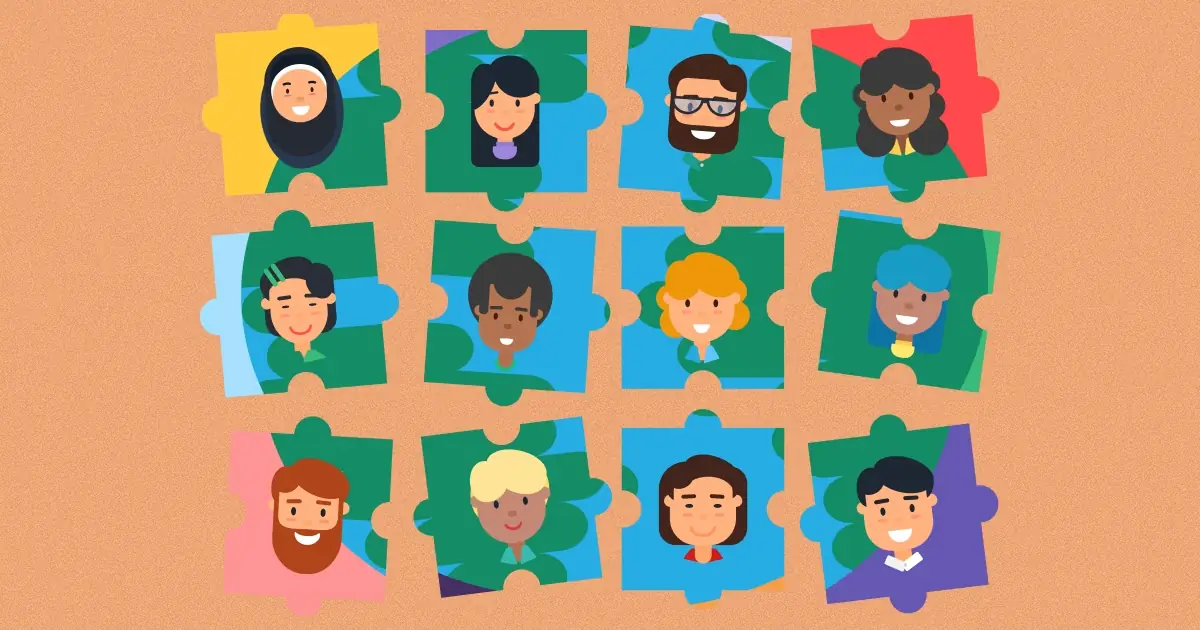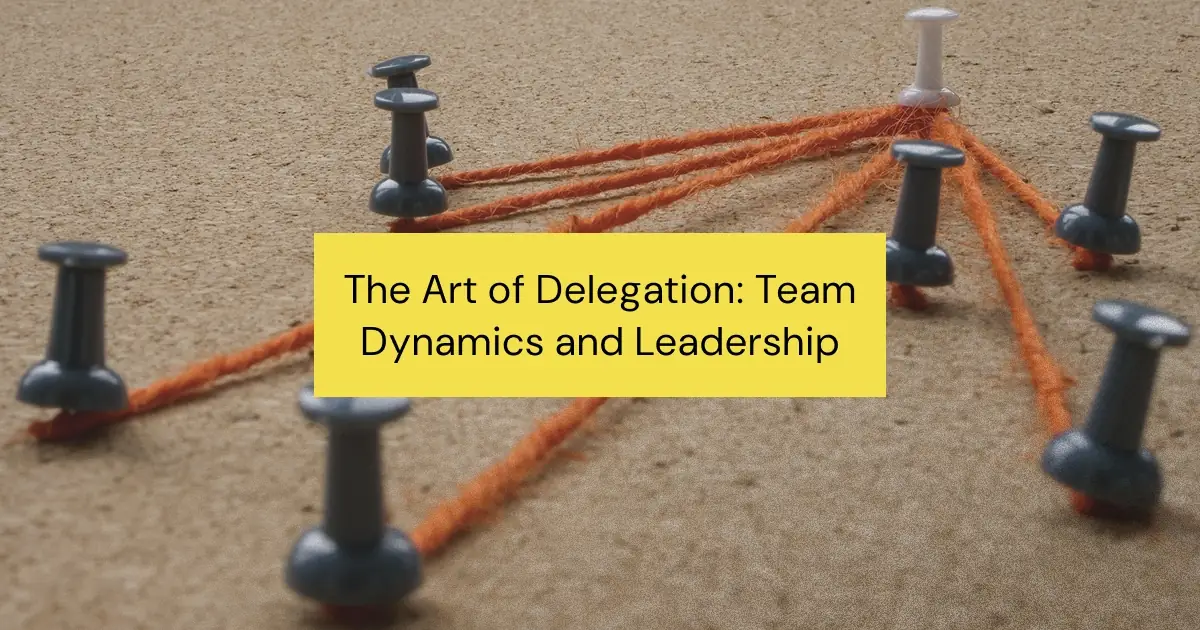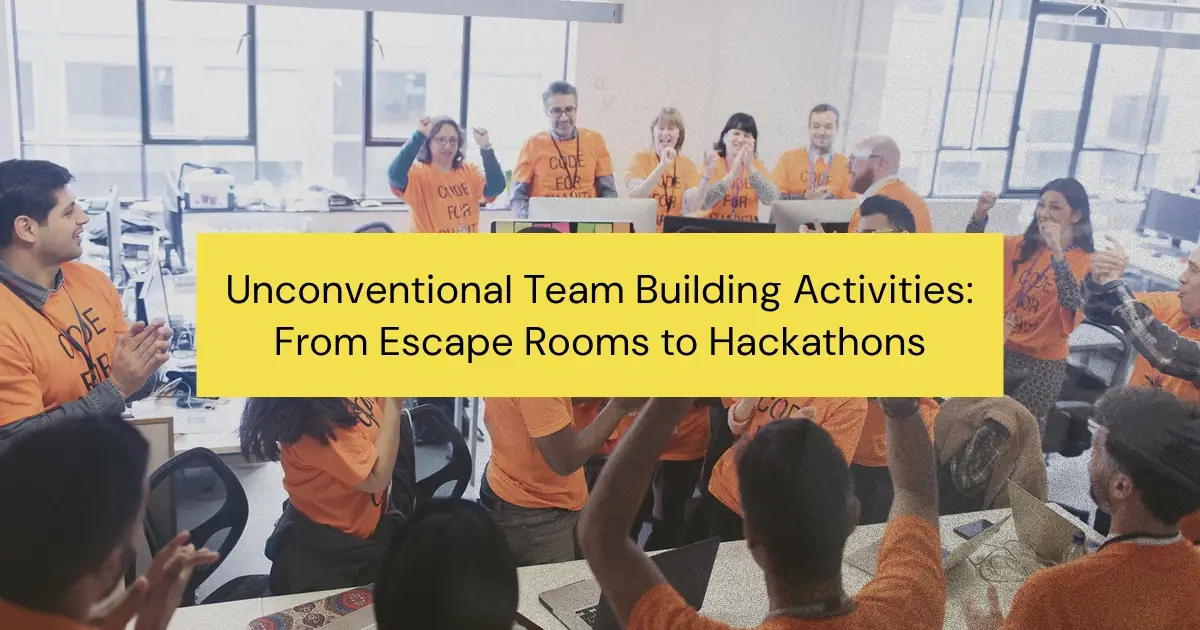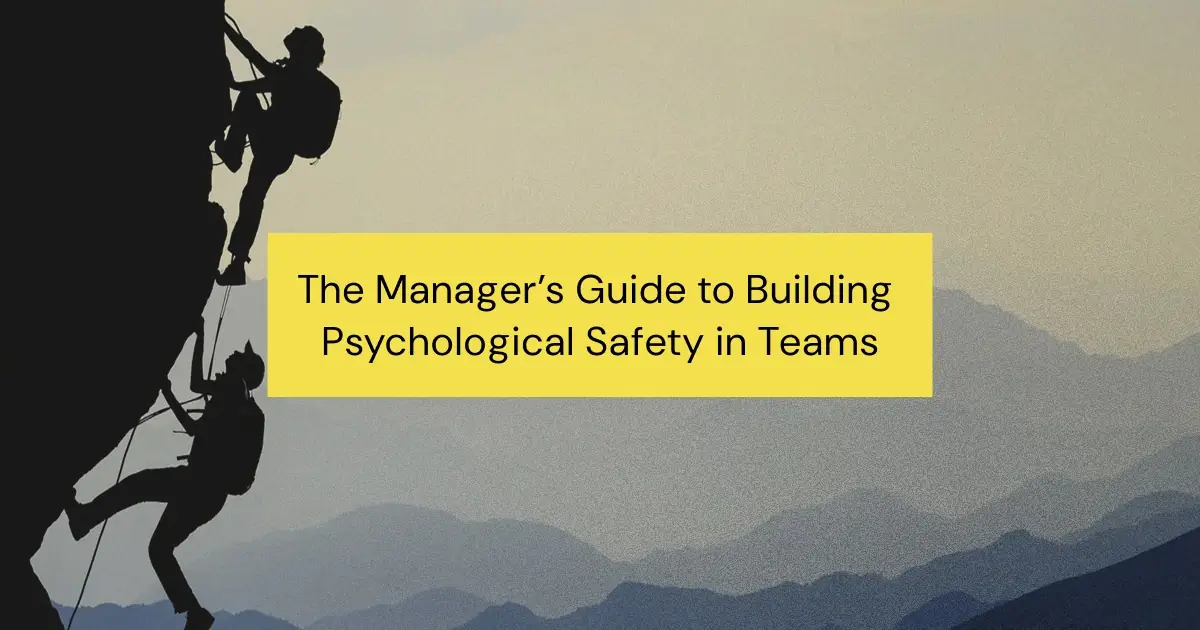In the realm of professional teamwork, the secret to a truly effective and harmonious team often lies not just in skills or experience, but in the intricate dynamics of personalities. Team building, a cornerstone for success in any collaborative environment, takes on a new dimension when infused with the insights provided by personality tests. This article is your guide to understanding how these tests can be a powerful tool in constructing, developing, and enhancing team performance.
Imagine a world where team conflicts are rare, not because issues don’t arise, but because team members understand and respect each other’s perspectives. Picture a team where tasks are not just delegated, but are matched to individuals based on their innate strengths and preferences. This is not a utopian vision, but a practical reality that can be achieved through the strategic use of personality tests in team building.
Check out our list of the best assessment tools for team building.
In professional settings like tech startups, consulting firms, or any team-oriented workplace, understanding each other's personality types is not just beneficial; it’s essential. It's about creating a work environment where everyone feels valued and understood. It's about tapping into the diverse range of strengths that each team member brings to the table. And it’s about turning these insights into strategies for enhanced collaboration and productivity.
Through this article, we’ll delve into how personality tests can be the cornerstone of effective team building. We'll explore how they help in assigning roles that fit like puzzle pieces, foster an environment of mutual respect, and lead to more effective communication. Whether you're a team leader striving for a more cohesive unit, or a member seeking a more collaborative and understanding team environment, this exploration into personality-driven team building is for you.
What Are the Most Common Personality Tests For Team Building?
At their core, personality tests are tools designed to measure and categorize various aspects of a person's character or psychological makeup. But don't let the simplicity of this definition fool you; these tests are more than just a series of questions and answers. They are a window into the complex tapestry of traits that make up each individual in a team.
There are several types of team building personality tests used in professional settings, each with its unique focus and methodology:
- Myers-Briggs Type Indicator (MBTI): Perhaps the most famous, MBTI categorizes individuals into 16 personality types based on four dichotomies: Introversion/Extraversion, Sensing/Intuition, Thinking/Feeling, and Judging/Perceiving. It helps in understanding how people perceive the world and make decisions.
- DISC Assessment: This test focuses on four primary behavioral traits: Dominance, Influence, Steadiness, and Conscientiousness. DiSC is particularly useful for understanding communication styles and workplace behaviors.
- TeamDynamics: Sometimes called "the team personality test," TeamDynamics assesses the unique behavioral characteristics of the overall team across the dimensions of Communicating, Processing of information, Deciding on a course of action, and Executing a team's plans. It is most helpful when looking to improve the communication and collaboration across an entire group.
- The Big Five Personality Traits: Also known as the Five Factor Model, it measures five key dimensions of personality: Openness, Conscientiousness, Extraversion, Agreeableness, and Neuroticism.
Selecting the right personality test for your team building goals is the first and most important step. Are you looking to help individuals on your team understand themselves? MBTI or Big Five are probably the best choices. Or are you looking to improve the interactions among team members? In which case, try TeamDynamics or the DiSC assessment instead.
How Do Personality Tests Help In Team Building?
Every team member possesses a unique set of skills and traits that define their approach to work. Personality tests provide a structured method to uncover these characteristics. For instance, some individuals may excel in creative thinking and ideation (a strength), while others may be more detail-oriented and methodical (a different kind of strength). Similarly, some might prefer a collaborative approach (a work style), while others might thrive in solitary tasks.
Recognizing these differences is key to assigning roles that best fit each individual’s capabilities, ensuring the team works in harmony. It also helps in pinpointing areas where team members might need support or further development, fostering a culture where continuous improvement is valued.
1. Improved Communication
Personality tests shed light on various communication styles within a team. Understanding these styles is essential for fostering clear, effective dialogue among team members. For example, one person might value direct and to-the-point conversations, while another might prefer a more narrative and detailed approach. By being aware of these preferences, team members can adapt their communication methods accordingly, reducing misunderstandings and enhancing overall clarity in interactions.
2. Effective Conflict Resolution
Conflict is a natural part of any team dynamic. However, the way it's managed can make a significant difference in the team's productivity and morale. Personality tests help team members understand each other’s reactions and triggers during conflicts. This understanding is crucial in developing strategies for conflict resolution that are empathetic and tailored to the individuals involved. Teams can then navigate disagreements more constructively, with a focus on finding solutions rather than exacerbating problems.
3. Enhanced Team Cohesion
Personality tests play a significant role in fostering team cohesion. By highlighting the diverse array of personalities within a team, these tests encourage a culture of mutual respect and appreciation. Team members begin to see their differences not as hindrances, but as complementary strengths that contribute to the team’s success. This awareness builds a more supportive and collaborative environment, where each member feels valued and understood. In such an atmosphere, team cohesion naturally improves, leading to a more unified and productive team.
{{inline-cta}}
Implementing Personality Tests for Team Building: A Step-by-Step Guide
Introducing personality tests for team building is a strategic process that, when done correctly, can significantly enhance team performance and dynamics. This section provides a practical, step-by-step guide on how to effectively implement personality tests like TeamDynamics in your team and offers tips on interpreting the results for maximum benefit.
Step 1: Setting the Stage
- Communicate the Purpose: Start by explaining to your team why you are implementing personality tests. Emphasize that the goal is to understand each other better, improve collaboration, and enhance overall team performance.
- Choose the Right Test: Select a personality test that suits your team's needs. TeamDynamics, for example, is tailored for professional teams and focuses on workplace behaviors and interactions.
- Ensure Participation: Encourage every team member to participate. Make it clear that this is a team effort and everyone's involvement is crucial.
Step 2: Conducting the Test
- Schedule a Testing Session: Arrange a dedicated time for the team to take the test. This could be during a team meeting or a special workshop.
- Provide Guidance: Ensure team members understand how to take the test and reassure them that there are no right or wrong answers. It's about honest self-assessment.
- Collect the Results: Once everyone has completed the test, gather the results for analysis.
Step 3: Analyzing and Sharing Results
- Review the Results: Analyze the results either internally or with the help of an expert, depending on the complexity of the test.
- Share with the Team: Organize a personality test team meeting to discuss the results with the team. This should be done in an open, non-judgmental manner.
- Respect Privacy: Be sensitive to the fact that some team members might not be comfortable sharing their results in detail. Focus on general trends rather than individual scores.
- Make it Fun: Just because team building is serious, doesn't mean it can't be seriously fun. Pick a fun personality test for team building and create engaging discussion topics to spur a robust team conversation.
Step 4: Applying the Insights
- Identify Strengths and Weaknesses: Use the results to identify individual and team strengths, weaknesses, and working styles.
- Adjust Team Roles and Responsibilities: Realign roles and tasks based on the insights gained to play to each member’s strengths.
- Plan Development Activities: Identify areas for development and plan training or team-building activities accordingly.
Step 5: Ongoing Application
- Regular Check-ins: Periodically revisit the test results in team meetings to ensure the insights are being actively used.
- Adapt and Evolve: Be open to the possibility that individuals and team dynamics might change over time, and be prepared to adapt accordingly.
Tips for Interpreting and Applying Results
- Look for Patterns: Instead of focusing on individual traits, look for patterns in the team that can inform how you work together.
- Promote Diversity: Value different personality types and leverage this diversity to create a balanced and effective team.
- Focus on Development: Use the insights as a basis for personal and professional development, not for labeling or pigeonholing team members.
- Encourage Open Discussion: Foster an environment where team members feel comfortable discussing their results and how these affect their work.
A personality-based team building activity isn't a one-time deal but an ongoing process. It requires commitment, openness, and a willingness to adapt based on the insights gained. Done well, it can lead to a more harmonious, understanding, and productive team environment.
Addressing Common Concerns and Misconceptions
While the use of personality tests in team building has gained popularity, it's not uncommon to encounter skepticism regarding their effectiveness and applicability in professional settings. In this section, we address some of these concerns, debunking common misconceptions with data and expert opinions to reinforce the value of these tools in enhancing team dynamics.
Concern 1: Accuracy and Reliability of Personality Tests
Misconception: Personality tests are not accurate or reliable enough for professional use.
Response: Modern personality tests, especially those designed for professional environments, are backed by extensive research and psychological theory. According to a study published in the Journal of Applied Psychology, well-validated personality tests are reliable predictors of job performance and team compatibility. These tests undergo rigorous standardization, ensuring consistency and accuracy in their results.
Concern 2: Oversimplification of Personalities
Misconception: Personality tests oversimplify complex human behaviors into limited categories.
Response: While personality tests categorize traits, they do not aim to pigeonhole individuals but rather provide a framework for understanding behavior. Dr. Susan Whitbourne, a psychology professor at the University of Massachusetts Amherst, explains that these tests offer a starting point for deeper analysis and understanding of individual differences, which is crucial in a team setting.
Concern 3: Potential for Labeling and Bias
Misconception: Using personality tests in the workplace can lead to labeling and bias.
Response: When used correctly, personality tests are tools for insight, not labels. They are intended to foster a greater understanding and appreciation of diverse work styles and preferences. Experts advise that the results should be used as a guide for development and team composition rather than as definitive labels that limit potential or create bias.
Concern 4: Applicability to Real-World Settings
Misconception: The results of personality tests may not be applicable or useful in real-world professional scenarios.
Response: Numerous case studies and organizational reports show the practical benefits of applying personality test insights in the workplace. For instance, a report by the Society for Human Resource Management indicated that organizations using personality assessments for team building saw improvements in team communication, conflict resolution, and overall productivity. These tests help in creating more harmonious and efficient teams by understanding and leveraging individual strengths.
Concern 5: Resistance to Change
Misconception: Employees may resist the use of personality tests, viewing them as invasive or unnecessary.
Response: Transparency and communication are key. By clearly explaining the purpose, benefits, and confidentiality of the tests, and by involving team members in the process, resistance can be minimized. Feedback from employees who have experienced positive changes due to personality testing can also help alleviate concerns.
While there are concerns surrounding the use of personality tests in team building, data and expert opinions overwhelmingly support their effectiveness. These tools, when used responsibly, can provide valuable insights into team dynamics, leading to more cohesive and productive professional environments.
Selecting the Right Personality Test for Your Team
Choosing the most suitable personality test for your team building goals is a critical decision that can significantly influence the effectiveness of your team building efforts.
To ensure you select a test that aligns with your team's unique needs and goals, consider the following key factors.
- Relevance to the Workplace: Choose a test specifically designed for professional environments. It should offer insights relevant to work-related behaviors, communication styles, and team dynamics.
- Ease of Understanding and Application: The test should provide clear, actionable insights. It’s important that the results are easy to interpret and can be directly applied to improve team performance.
- Adaptability to Different Team Sizes and Types: Consider whether the test is versatile enough to be effective for your specific team size and the nature of your work.
- Support and Resources: Ensure that the test comes with adequate support, such as guidance on interpretation, strategies for application, and resources for further learning.
We built TeamDynamics specifically to meet the needs of managers looking for a powerful team building personality test. Features of TeamDynamics that make it a great choice:
- Workplace-Centric Design: TeamDynamics is tailored for professional settings, offering insights that are directly applicable to everyday work scenarios and team interactions.
- Comprehensive and Nuanced Approach: This test goes beyond basic personality traits, delving into aspects like conflict resolution styles, motivational drivers, and collaborative tendencies, which are crucial for team success.
- User-Friendly and Actionable Results: The results from TeamDynamics are presented in a format that is easy to understand and apply. The test provides practical suggestions on how to leverage personality insights for enhancing team performance.
- Scalability and Flexibility: Whether you have a small team or a large, diverse group, TeamDynamics is designed to adapt to various team structures and dynamics, making it a versatile tool for any professional setting.
- Affordable: With flexible pricing that matches your team's needs, TeamDynamics fits within just about any budget.
Selecting the right personality test like TeamDynamics can be a transformative step in your team building journey. It’s about finding a tool that not only provides insights into individual personalities but also enhances the collective functioning and success of your team.
Conclusion: Harness the Power of Personality Tests in Team Building
The integration of personality tests into team building is more than just a trend – it's a strategic approach to unlocking the full potential of your team. By understanding how personalities interact within a team setting, organizations can foster a work environment that is not only more harmonious and productive but also more adaptable and innovative.
The journey of selecting and implementing a personality test like TeamDynamics in your team can be transformative. It opens up avenues for improved communication, effective conflict resolution, and a deeper understanding of each team member's unique strengths and contributions. The key is to approach this process with openness, a willingness to learn, and a commitment to applying these insights for the betterment of the team as a whole.
Remember, the goal of using personality tests in team building is not to pigeonhole individuals into rigid categories but to provide a dynamic and nuanced understanding of the diverse personalities that make up your team. This understanding is vital in creating an environment where every member feels valued, understood, and positioned to contribute their best.
In conclusion, the effective use of personality tests is a powerful step towards building stronger, more cohesive teams. It's an investment in your team's future, one that promises not only enhanced performance and productivity but also a more engaged and satisfied workforce. As you embark on this journey, keep in mind that the strength of a team lies not just in the sum of its parts, but in the intricate and dynamic ways these parts interact and complement each other. With the right approach and tools, you can turn the diverse personalities within your team into your greatest asset.


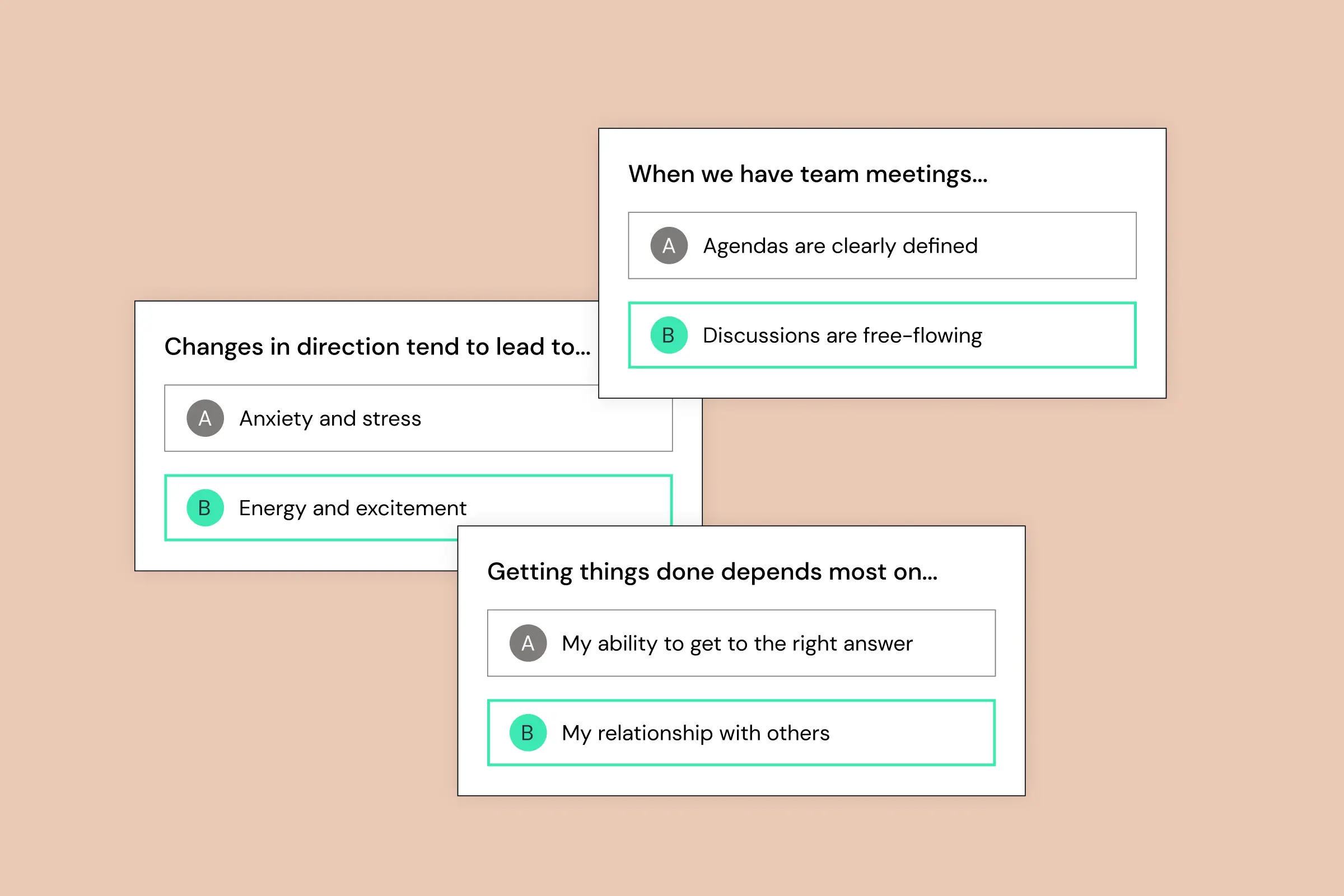

.png)
